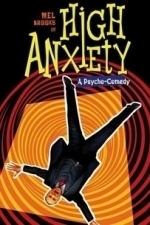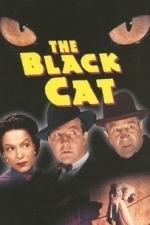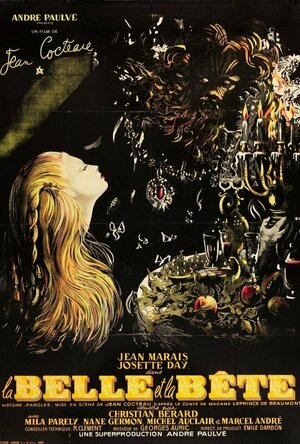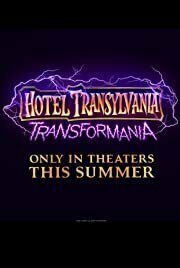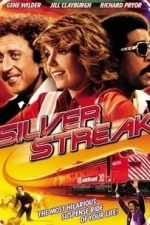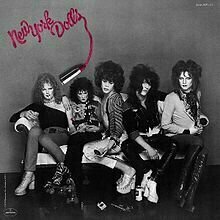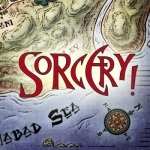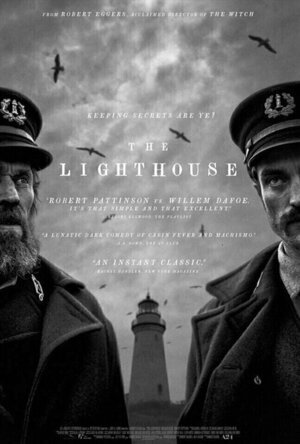Search
Cloris Leachman recommended High Anxiety (1977) in Movies (curated)
Joe Dante recommended The Black Cat (1941) in Movies (curated)
Neil Gaiman recommended Beauty and the Beast (1946) in Movies (curated)
Chris Sawin (602 KP) rated Hotel Transylvania 4 (2021) in Movies
Jan 22, 2022
The transformation sequences. (1 more)
The 2D animated end credits
Genndy Tartakovsky not directing (2 more)
Humor exchanged for annoying behavior
Feels almost like a soft reboot for a final film.
A Monstrous Monstrosity
Hotel Transylvania: Tranformania is the final film in the Hotel Transylvania franchise. With Genndy Tartakavsky no longer directing (he co-writes and executive produces this time around) and Adam Sandler and Kevin James not returning (Brian Hull and Brad Abrell now voice Dracula and Frankenstein), Transformania takes an awkward step back from the previous three films.
Despite some character designs (Bela in the second film, the Kraken in the third) and some tremendous end credit animations that are done in a very recognizable Tartakavsky style (think Dexter’s Lab or Powerpuff Girls), the films are mediocre at best and yet became a billion dollar franchise.
Hull and Abrell do a decent job matching their voices to the Drac and Frank characters. You may not have noticed the characters were voiced by someone else if you hadn’t known beforehand. However, the animation looks noticeably different. Maybe new directors Jennifer Kluska and Derek Drymon are to credit for that. Kluska was a storyboard artist on Hotel Transylvania 2 and 3 while Drymon was an executive producer of Adventure Time and was a storyboard artist on The Spongebob Squarepants Movie.
The film was also moved around several times thanks to COVID and the pandemic. Sony Pictures Releasing eventually nixed the film’s theatrical run and sold distribution rights to Amazon Studios. This is the only Hotel Transylvania film to be released directly to a streaming platform.
Considering that this is the fourth film, Transformania basically rewrites several characters to an extent that it ignores key details from other films. Johnny is now akin to Homer Simpson since he is dumber than he has ever been here. He had a stoner or frat boy with a heart of gold kind of vibe about him originally. He was very mellow by nature, but had seen a good chunk of the world and knew more than his behavior let on. He had stories even though he was young and he was likeable. Transformania turns him into a dumb and unfunny dork that is borderline offensive due to how annoying he is.
Dracula has lost whatever made him somewhat charming in the previous three films, as well. In Transformania, he’s looking to settle down with Ericka and retire from running the hotel. The intention is to give the hotel to Mavis and Johnny, but all of a sudden Dracula hates Johnny. The first three films are built around how close Johnny and Dracula become. Now Dracula just finds Johnny unbearable.
After establishing in the second film that Dennis is part vampire and has powers, that concept is totally erased in Transformania. Dracula hypnotizes Dennis in the beginning of the film and he remains that way for the bulk of the film without ever utilizing any sort of power or doing anything remotely relevant.
Instead of downright telling Johnny that he can’t stand him, Dracula lies and says that he can’t leave the hotel in the hands of a human; it can only be inherited by monsters. Johnny then discusses the matter with Abraham Van Helsing who uses his Monsterfication Ray to turn Johnny into a giant lizard-like monster. But the ray can also turn monsters into humans. Once Dracula discovers what Johnny has done, he attempts to turn Johnny back before Mavis finds out. The plan backfires and Dracula gets hit with the ray and is turned human. His friends Wayne, Griffin, Murray, and Frankenstein are also turned human. If a cure isn’t found, the results may be permanent.
The highlight of the film is the transformation sequences since they are noticeably inspired by the horror film genre; specifically An American Werewolf in London. The end credits sequence is also done in a similar style to the first three films, so that sequence is fairly entertaining as well.
Transformania otherwise feels like a downgrade all around and the bar wasn’t all the high to begin with. As expected, there is a dancing sequence that may or may not be something you look forward to. None of the gags come off as humorous as every character mostly seems to be aiming to be more obnoxious than the other. The “fun” lies within seeing the monster characters as humans. The most notable is Griffin who has been totally invisible until now.
Hotel Transylvania: Transformania had a lot of obstacles relating to its release and after viewing the film you can understand why. It’s a lukewarm sendoff that mostly feels like a lethargic attempt to recapture its former glory. It’s built around an entertaining concept that it doesn’t fully capitalize on. It ultimately obliterates character traits for trite gags and cliché punch lines.
Despite some character designs (Bela in the second film, the Kraken in the third) and some tremendous end credit animations that are done in a very recognizable Tartakavsky style (think Dexter’s Lab or Powerpuff Girls), the films are mediocre at best and yet became a billion dollar franchise.
Hull and Abrell do a decent job matching their voices to the Drac and Frank characters. You may not have noticed the characters were voiced by someone else if you hadn’t known beforehand. However, the animation looks noticeably different. Maybe new directors Jennifer Kluska and Derek Drymon are to credit for that. Kluska was a storyboard artist on Hotel Transylvania 2 and 3 while Drymon was an executive producer of Adventure Time and was a storyboard artist on The Spongebob Squarepants Movie.
The film was also moved around several times thanks to COVID and the pandemic. Sony Pictures Releasing eventually nixed the film’s theatrical run and sold distribution rights to Amazon Studios. This is the only Hotel Transylvania film to be released directly to a streaming platform.
Considering that this is the fourth film, Transformania basically rewrites several characters to an extent that it ignores key details from other films. Johnny is now akin to Homer Simpson since he is dumber than he has ever been here. He had a stoner or frat boy with a heart of gold kind of vibe about him originally. He was very mellow by nature, but had seen a good chunk of the world and knew more than his behavior let on. He had stories even though he was young and he was likeable. Transformania turns him into a dumb and unfunny dork that is borderline offensive due to how annoying he is.
Dracula has lost whatever made him somewhat charming in the previous three films, as well. In Transformania, he’s looking to settle down with Ericka and retire from running the hotel. The intention is to give the hotel to Mavis and Johnny, but all of a sudden Dracula hates Johnny. The first three films are built around how close Johnny and Dracula become. Now Dracula just finds Johnny unbearable.
After establishing in the second film that Dennis is part vampire and has powers, that concept is totally erased in Transformania. Dracula hypnotizes Dennis in the beginning of the film and he remains that way for the bulk of the film without ever utilizing any sort of power or doing anything remotely relevant.
Instead of downright telling Johnny that he can’t stand him, Dracula lies and says that he can’t leave the hotel in the hands of a human; it can only be inherited by monsters. Johnny then discusses the matter with Abraham Van Helsing who uses his Monsterfication Ray to turn Johnny into a giant lizard-like monster. But the ray can also turn monsters into humans. Once Dracula discovers what Johnny has done, he attempts to turn Johnny back before Mavis finds out. The plan backfires and Dracula gets hit with the ray and is turned human. His friends Wayne, Griffin, Murray, and Frankenstein are also turned human. If a cure isn’t found, the results may be permanent.
The highlight of the film is the transformation sequences since they are noticeably inspired by the horror film genre; specifically An American Werewolf in London. The end credits sequence is also done in a similar style to the first three films, so that sequence is fairly entertaining as well.
Transformania otherwise feels like a downgrade all around and the bar wasn’t all the high to begin with. As expected, there is a dancing sequence that may or may not be something you look forward to. None of the gags come off as humorous as every character mostly seems to be aiming to be more obnoxious than the other. The “fun” lies within seeing the monster characters as humans. The most notable is Griffin who has been totally invisible until now.
Hotel Transylvania: Transformania had a lot of obstacles relating to its release and after viewing the film you can understand why. It’s a lukewarm sendoff that mostly feels like a lethargic attempt to recapture its former glory. It’s built around an entertaining concept that it doesn’t fully capitalize on. It ultimately obliterates character traits for trite gags and cliché punch lines.
BankofMarquis (1832 KP) rated Silver Streak (1976) in Movies
Jun 7, 2020
The start of a wonderful comedic partnership
Most people remember Gene Wilder as the frazzled haired wild man in such Mel Brooks classic films as THE PRODUCERS, BLAZING SADDLES and YOUNG FRANKENSTEIN. Others will recall him as the mad genius that held our attention in WILLY WONKA AND THE CHOCOLATE FACTORY, but there was a 3rd phase to Wilder's career - his unlikely partnership with Richard Pryor - that started with 1976's SILVER STREAK.
Set aboard the titular passenger train, SILVER STREAK is part Alfred Hitchcock "wrong man" suspense thriller, part comedy and part action flick with strong performances at the center anchoring the action.
Surprisingly, Wilder brings a sincere quality to his "everyman" hero of this tale. His book editor, George Caldwell, just wants a quiet 2 1/2 day trip on the train from Los Angeles to Chicago. You root for George from the start. Wilder's performance is deftly tailored to this movie, keeping a lid on his more frenetic energy that helps keep his character grounded. He pairs nicely with Jill Clayburgh (remember her from the '70's?) as a women he meets (and falls in love with) along the way. Clayburgh burst into the spotlight with this performance - and the 2 have tremendous chemistry together.
They are joined by a bevy of wonderful character actors - Ray Walston, Richard "Jaws" Kiel, Ned Beatty, Clifton James, Valerie Curtin, Fred Willard and the great Scatman Crothers. All bring life and energy to this film. Patrick McGoohan is perfectly cast as the villain of the piece. His "buttoned-up" bad guy is the perfect balance to the Wilder's character.
But, of course, the person who steals this film is the great Richard Pryor as Grover T. Muldoon, a petty thief, con-man and "street-wise" hood who aids George in defeating the bad guys. Pryor doesn't show up in this movie until about 1/2 way through, but when he does, the energy (and pace) of this film picks up considerably and the roller coaster ride begins. The comedic partnership between Wilder and Pryor is magnificent, they play off each other very well and they will end up pairing together in 3 other films after this.
Director Arthur Hiller (THE AMERICANIZATION OF EMILY) does a strong, professional job of keeping the movie moving, keeping events grounded until a thrilling conclusion that is satisfying, indeed.
A fun action-thriller that is perfect summer fodder.
Letter Grade: A-
8 stars (out of 10) and you can take that to the Bank(ofMarquis)
Set aboard the titular passenger train, SILVER STREAK is part Alfred Hitchcock "wrong man" suspense thriller, part comedy and part action flick with strong performances at the center anchoring the action.
Surprisingly, Wilder brings a sincere quality to his "everyman" hero of this tale. His book editor, George Caldwell, just wants a quiet 2 1/2 day trip on the train from Los Angeles to Chicago. You root for George from the start. Wilder's performance is deftly tailored to this movie, keeping a lid on his more frenetic energy that helps keep his character grounded. He pairs nicely with Jill Clayburgh (remember her from the '70's?) as a women he meets (and falls in love with) along the way. Clayburgh burst into the spotlight with this performance - and the 2 have tremendous chemistry together.
They are joined by a bevy of wonderful character actors - Ray Walston, Richard "Jaws" Kiel, Ned Beatty, Clifton James, Valerie Curtin, Fred Willard and the great Scatman Crothers. All bring life and energy to this film. Patrick McGoohan is perfectly cast as the villain of the piece. His "buttoned-up" bad guy is the perfect balance to the Wilder's character.
But, of course, the person who steals this film is the great Richard Pryor as Grover T. Muldoon, a petty thief, con-man and "street-wise" hood who aids George in defeating the bad guys. Pryor doesn't show up in this movie until about 1/2 way through, but when he does, the energy (and pace) of this film picks up considerably and the roller coaster ride begins. The comedic partnership between Wilder and Pryor is magnificent, they play off each other very well and they will end up pairing together in 3 other films after this.
Director Arthur Hiller (THE AMERICANIZATION OF EMILY) does a strong, professional job of keeping the movie moving, keeping events grounded until a thrilling conclusion that is satisfying, indeed.
A fun action-thriller that is perfect summer fodder.
Letter Grade: A-
8 stars (out of 10) and you can take that to the Bank(ofMarquis)

Tactical Monsters
Games
App
This is a turn-based, hex grid tactics gameplay with monsters from all time and space. From Franky...
RPGApp MobileGame MobileApp TacticalGame
Adam Ant recommended New York Dolls by New York Dolls in Music (curated)

English Audio Books - Librivox
Book and Education
App
English Audiobooks - Librivox Learn English by reading and listening to "Audiobooks". If you know...
Kirk Bage (1775 KP) rated The Lighthouse (2019) in Movies
Jan 22, 2021
Robert Eggers made a striking introduction for himself in 2015 with the moody and disconcerting The Witch, bringing a future star to the world’s attention in Anya Taylor-Joy in the process. You could argue after seeing his sophomore effort, The Lighthouse, that in terms of creating deliberately nauseating landscapes his work is the third cog in the arthouse revival of intellectual “horror”, after Ari Aster (Hereditary / Midsommar) and Jordan Peele (Get Out / Us). The group actually sits quite well together, as there is an obvious social commentary by metaphor crossover going on here, as well as just a little bit of “crazy”.
The point of difference up front with Eggars seems to be an earthiness. He likes dirt, and straw and rain and holes in the ground, and a sense of temperature in a scene (usually very cold). He also loves to frame an image and hold it there simply for the bizarre beauty of it, much as David Lynch has done unapologetically and without explanation his whole career.
As perfect as Tayor-Joy was in The Witch for her innocent otherworldly qualities, so Willem Dafoe is also as a craggy, sweaty-toothed old man of the sea in this. Whatever else you take, or don’t take from The Lighthouse, it is hard to deny the absolute cinematic purity of Dafoe’s face! It alone will guarantee this film’s cult status (and his) forever. And I do mean forever; the very best images of this film are worthy to be frozen, framed and wondered at alongside the most enduring black and white iconography in the entire history of the art form. And most often the best images involve Dafoe.
He is just so damn interesting to look at, all the time, no matter what. His range as an actor over the years just gets more and more impressive the more you think about it. He is capable of being heartbreakingly vulnerable and tender, but can also be terrifying on demand. His streak of dark humour can not be underestimated either – consider the genius of his introduction here, where the simple touch of his pipe being upside down tells you everything you need to know about this man and where this film is going.
Except, we don’t know where it is going. Ever. It is a very odd experience in terms of a satisfying narrative. It never seems to settle or fit into a genre comfortably, which is fine if all elements sublimate magically, but I don’t think they quite do. Is it a horror, a comedy, a psychological thriller, a study of loneliness and isolation, a metaphor for… something? The closest I can get is to say it is as if Lynch remade Young Frankenstein with just Igor and Dr Frankenstein, at a lighthouse, but forgot to make it funny or cohere into a real story. Of course, the things that I am reaching for as shortcomings may be exactly what others see as strengths. There is something to be said for being taken on a journey you can’t define or easily explain.
Quite often on this journey we are teased and fed details that seem to go nowhere, and avenues that may have proved interesting to explore are closed with a bang, in favour of another drinking scene and another fight – which are great the first few times, but become repetitive to a baffling degree later on. Mythology and dreams of the sea are played with, but also not fully approached; we are only given brief flashes of Mermaids and Krakens, nightmares and visions only, before returning to the mundanity and drudgery of the job of a lighthouse keeper. You are often left wondering who is going more mad, the men in the film or you watching it. I definitely recommend the best way to watch this is a little or a lot drunk, very late at night… it demands it, somehow.
It is difficult for all these reasons to say with any true certainty then, after just one viewing, if I think it is any good… I don’t know yet, I will have to watch it again some time to find out, is my best answer. For sure the photography is 100% first rate and instantly unforgettable – Jarin Blaschke was deservedly Oscar nominated for the extremely fine work – and the design and feel of the whole thing is quite masterful. I really want to like it more than I do, and perhaps if I was still in my wide-eyed twenties I would be enthusing about it endlessly, but now… I can see a touch of the Emperor’s new clothes about it, so am cautious of praising it too much.
One other element that is impressive, however, that I have yet to touch on, is the continued rise of Mr Robert Pattinson as an actor of serious note. As I have already touched on recently in other reviews, I did not see this coming, that it would be him that I was naming as one of the most promising talents of his age group working in film today! But you just can’t deny his versatility and understanding of genre and character. He puts in another very solid effort here, full of interesting choices and nuance; he is certainly an exciting prospect for the decade ahead.
In summary. See it. Unless you absolutely hate things that don’t tie the strings up nice and neatly, and decide for yourself. Some people will hate it, and I get that. It is a film-lovers film, for sure. Mesmerising and Meticulous, as one critic put it. Admire it for the craft involved, and experience it with an open mind. Just don’t go in expecting traditional horror, or traditional drama, or traditional comedy, or even traditional surrealism… The Lighthouse, for all it’s debatable flaws is unique! I suggest you let it be that way by not over-reaching to define it.
The point of difference up front with Eggars seems to be an earthiness. He likes dirt, and straw and rain and holes in the ground, and a sense of temperature in a scene (usually very cold). He also loves to frame an image and hold it there simply for the bizarre beauty of it, much as David Lynch has done unapologetically and without explanation his whole career.
As perfect as Tayor-Joy was in The Witch for her innocent otherworldly qualities, so Willem Dafoe is also as a craggy, sweaty-toothed old man of the sea in this. Whatever else you take, or don’t take from The Lighthouse, it is hard to deny the absolute cinematic purity of Dafoe’s face! It alone will guarantee this film’s cult status (and his) forever. And I do mean forever; the very best images of this film are worthy to be frozen, framed and wondered at alongside the most enduring black and white iconography in the entire history of the art form. And most often the best images involve Dafoe.
He is just so damn interesting to look at, all the time, no matter what. His range as an actor over the years just gets more and more impressive the more you think about it. He is capable of being heartbreakingly vulnerable and tender, but can also be terrifying on demand. His streak of dark humour can not be underestimated either – consider the genius of his introduction here, where the simple touch of his pipe being upside down tells you everything you need to know about this man and where this film is going.
Except, we don’t know where it is going. Ever. It is a very odd experience in terms of a satisfying narrative. It never seems to settle or fit into a genre comfortably, which is fine if all elements sublimate magically, but I don’t think they quite do. Is it a horror, a comedy, a psychological thriller, a study of loneliness and isolation, a metaphor for… something? The closest I can get is to say it is as if Lynch remade Young Frankenstein with just Igor and Dr Frankenstein, at a lighthouse, but forgot to make it funny or cohere into a real story. Of course, the things that I am reaching for as shortcomings may be exactly what others see as strengths. There is something to be said for being taken on a journey you can’t define or easily explain.
Quite often on this journey we are teased and fed details that seem to go nowhere, and avenues that may have proved interesting to explore are closed with a bang, in favour of another drinking scene and another fight – which are great the first few times, but become repetitive to a baffling degree later on. Mythology and dreams of the sea are played with, but also not fully approached; we are only given brief flashes of Mermaids and Krakens, nightmares and visions only, before returning to the mundanity and drudgery of the job of a lighthouse keeper. You are often left wondering who is going more mad, the men in the film or you watching it. I definitely recommend the best way to watch this is a little or a lot drunk, very late at night… it demands it, somehow.
It is difficult for all these reasons to say with any true certainty then, after just one viewing, if I think it is any good… I don’t know yet, I will have to watch it again some time to find out, is my best answer. For sure the photography is 100% first rate and instantly unforgettable – Jarin Blaschke was deservedly Oscar nominated for the extremely fine work – and the design and feel of the whole thing is quite masterful. I really want to like it more than I do, and perhaps if I was still in my wide-eyed twenties I would be enthusing about it endlessly, but now… I can see a touch of the Emperor’s new clothes about it, so am cautious of praising it too much.
One other element that is impressive, however, that I have yet to touch on, is the continued rise of Mr Robert Pattinson as an actor of serious note. As I have already touched on recently in other reviews, I did not see this coming, that it would be him that I was naming as one of the most promising talents of his age group working in film today! But you just can’t deny his versatility and understanding of genre and character. He puts in another very solid effort here, full of interesting choices and nuance; he is certainly an exciting prospect for the decade ahead.
In summary. See it. Unless you absolutely hate things that don’t tie the strings up nice and neatly, and decide for yourself. Some people will hate it, and I get that. It is a film-lovers film, for sure. Mesmerising and Meticulous, as one critic put it. Admire it for the craft involved, and experience it with an open mind. Just don’t go in expecting traditional horror, or traditional drama, or traditional comedy, or even traditional surrealism… The Lighthouse, for all it’s debatable flaws is unique! I suggest you let it be that way by not over-reaching to define it.
